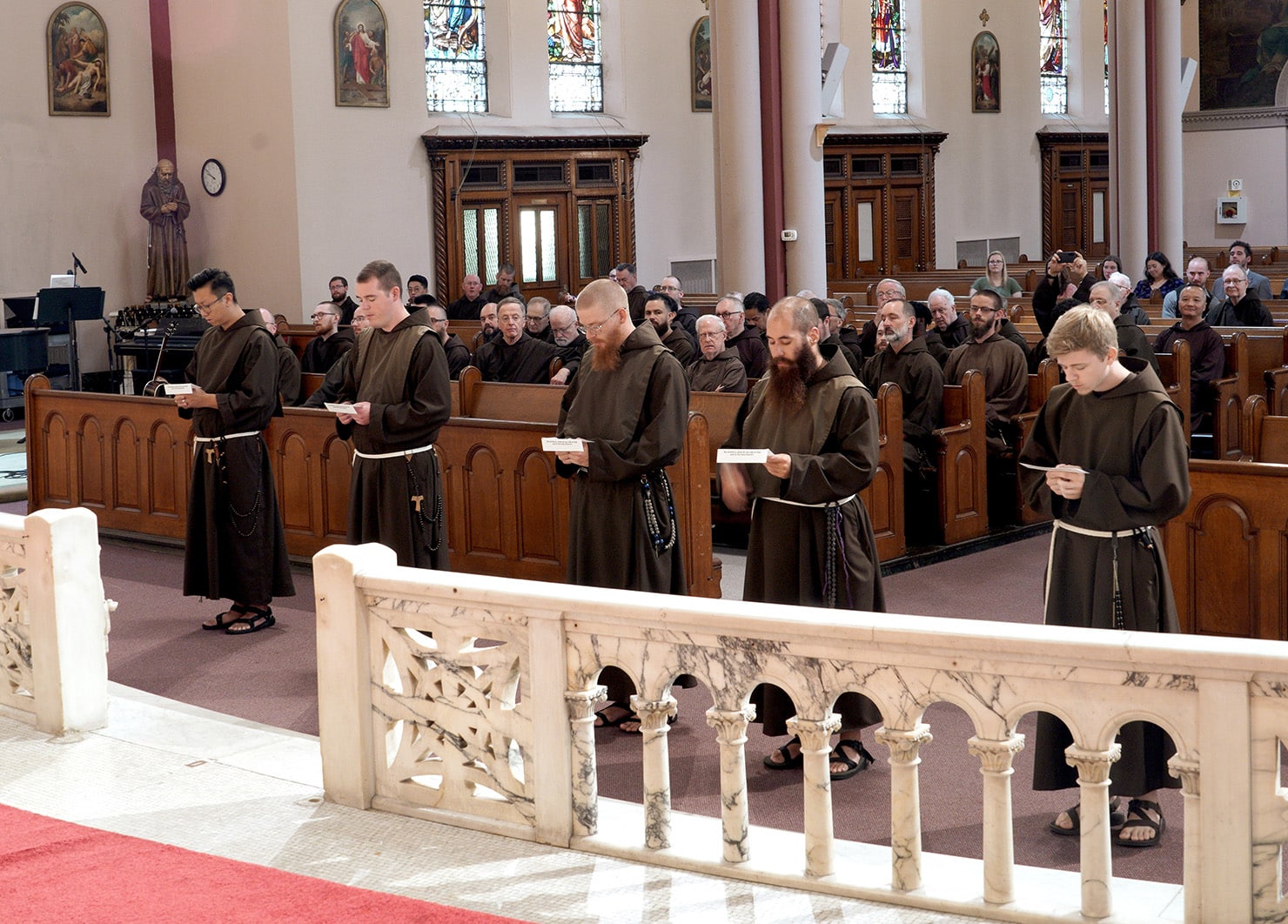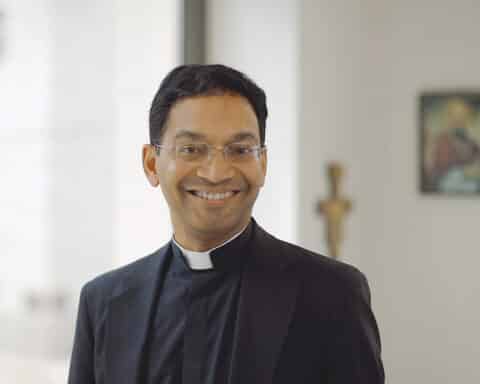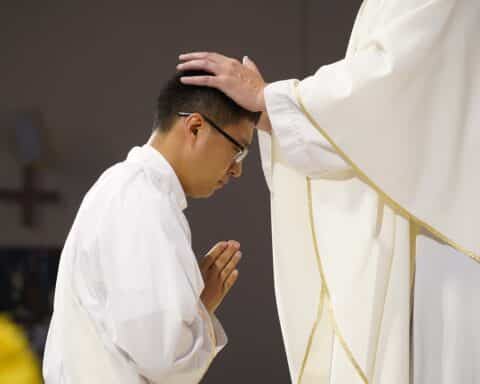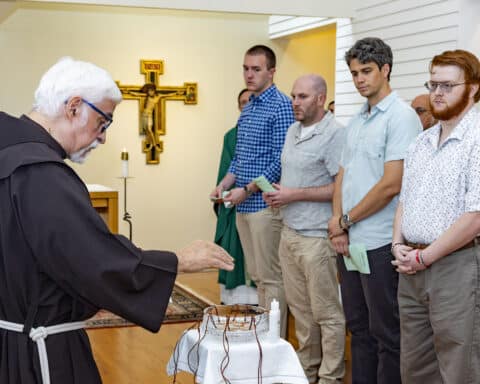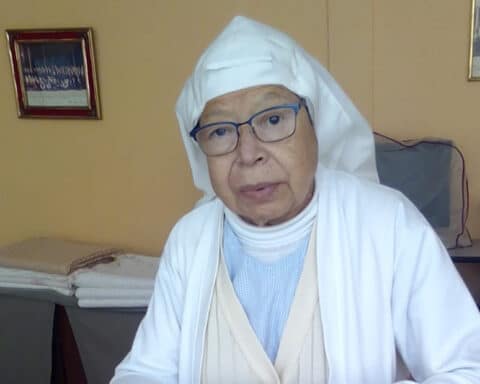Ten Capuchin Franciscans of St. Augustine Province in Pittsburgh are missionaries in Papua New Guinea and 25 serve in Puerto Rico. In both locations, they minister to some of the poorest of the poor.
In the Lawrenceville neighborhood of Pittsburgh where the motherhouse is located, two brothers are in charge of The Port, an evangelization ministry founded in 2020 to focus on young adults in the city. There, the friars connect to the community with opportunities to encounter Christ in prayer, beauty, service and spiritual and intellectual formation.
In between those diverse assignments, the rest of the 100 friars from the province might be serving in parishes, prisons, classrooms, soup kitchens and street ministries. About 70% are priests and the others are brothers.
Their work is rooted in the charism of their founder, St. Francis of Assisi, and in the rich Franciscan history of sending men to do work where they are most needed.
“We all have a missionary spirit,” vocations director Father Rafael Anguiano, OFM Cap, said about their many ministries. “We work for the Catholic Church, so whatever the Church needs, if we have it, we give it to her.”
Growing vocations
St. Francis, who lived from 1181 to 1226, sought to live the Gospel life through deep appreciation for the beauty of God’s creation and a simple life of prayer and charity. The Capuchin Franciscans emerged in 1524 as a reform movement with renewed emphasis on the founder’s life of prayer and simplicity.
The Province of St. Augustine in Pittsburgh was founded in 1873 when friars from Bavaria came to serve the German community in Lawrenceville. In addition to their presence in Papua New Guinea and Puerto Rico, they are also in parish assignments in several locations in Pennsylvania and West Virginia, with formation in postulancy in Philadelphia and post novitiate in Washington, D.C.
Father Rafael and four other Capuchins are at the newest assignment, a priory at Christ the King parish in Columbus, Ohio. They arrived in July.
“My provincial sent me here because there’s a great need of ministry to the Hispanic people at the parish,” he said. “This allows me to encounter men who want to know about the Capuchin way of life.”
Father Rafael studied with friars in his native Mexico.
“I was inspired by them by their prayer life and administering to the poor and the less fortunate,” he said. “I never thought I would be one of them, but I entered the Province of St. Augustine and made my final vows eight years ago.”
Their numbers are growing, he added, and most of the vocations come from men with college educations and master’s degrees and experience in the professional world.
“Most importantly, they have had in their journey experience with the Lord or with the Church and they are drawn to explore this calling,” he said. “Or they don’t find fulfillment in their jobs and want to find something more meaningful. God has definitely given me a beautiful ministry of working in recruitment. I have seen men growing in love for our Church and the Capuchin way of life, and that is very fulfilling. Everything is a gift from the Lord.”
A simple life
Brother Jim Mungovan is the guardian of the mother house where 20 retired friars live and 10 younger men have outside ministries. His vocation is rooted in lay volunteering.
“I wasn’t figuring on being a friar,” he said. “I thought I’d be married and have kids.”
But after two years of mission work in Papua New Guinea, he entered the Province of St. Augustine at age 39. He is now 59.
The Capuchins have been on that island nation since 1955.
“The men who went there were bringing the Church to people who had never seen white people before,” Brother Jim said. “When I got there, the Church in the bush was well established. Maybe 50% of the population is Christian, and a large portion of that is Catholic. Then there are Lutherans and smaller groups. We have vocations there and the diocesan priesthood is well established. So it’s a growing church.”
The people there, he said, taught him a great deal about the simplicity of living day to day with getting food, material to build their houses and whatever they needed from the jungle.
“It’s a very simple lifestyle and it dovetailed into being a Franciscan,” he said.
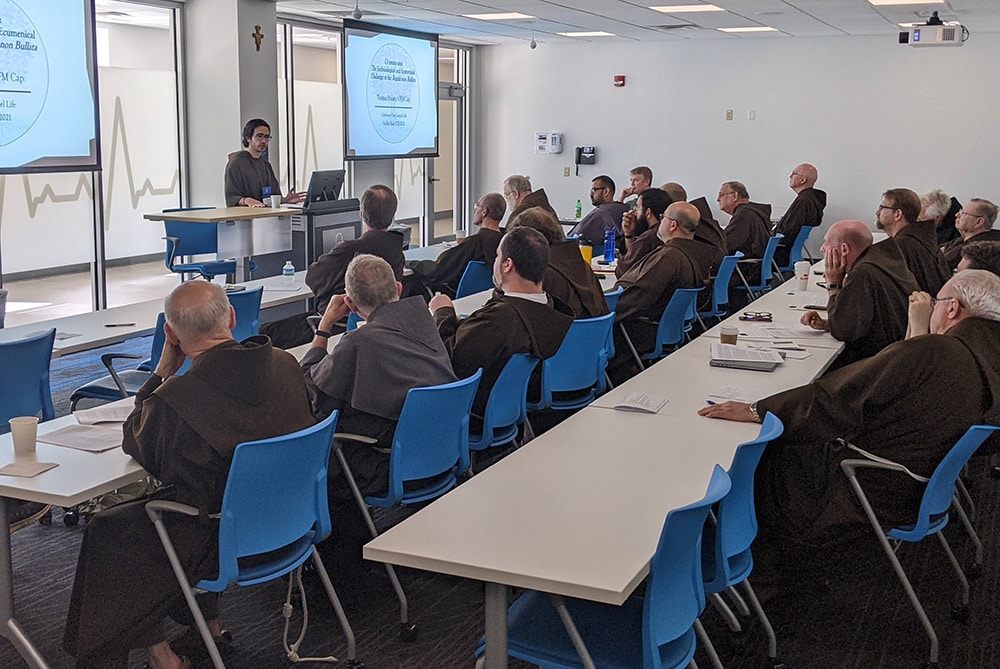
Reaching young adults
There are other hallmarks of the order.
“I think that people see in the Franciscans in general, and the Capuchins specifically, an authenticity in our lives and in what we say and in how we live,” Brother Jim said. “I think they appreciate seeing us when we do ministries with people on the streets, and one of our charisms is to minister to the marginalized. I think people like seeing us not being afraid to reach out to those who are forgotten and being down to earth with people.”
And, he added, the Capuchins bring the love of Christ to people in many ways, from preaching and confession, spiritual direction and just meeting them where they are.
Brother Ross Henley and Brother Matt Hindelang were given a blank canvas for founding The Port that takes its name from the chapel, the Portiuncula, that was home to the first followers of St. Francis. It’s also a wordplay on “port,” a safe harbor where people can find refreshment and inspiration for going out to live the Gospel in their daily lives.
The Assisi Arts Community is an initiative within The Port that offers opportunities for local artists to gather and share their work with the public. It’s in the spirit of St. Francis, who was attuned to God’s presence through the beauty of nature.
“We basically developed three pillars,” Brother Ross said. “One is to seek to share Franciscan spirituality and the second is to involve art and culture, and art and beauty. That’s really taking the line from Bishop Robert Barron, who often says to lead with beauty, and we are finding ways to do that. The third is working with young adults, because this place is a very young neighborhood with so many jobs in tech and medicine, and Brother Matt and I are still relatively young.”
The Port facilitates different art events featuring poetry, film, drawing and concerts. They also host a Mass followed by hiking and coffee and conversation afterward.
“We have holy hours, book studies, retreats and a confession ministry, so it’s a pretty broad range,” Brother Ross said. “What we are doing is providing opportunities for people to encounter Christ through adoration and the beauty of music and art work.”
Two prominent Capuchins emerged from the Province of St. Augustine.
Father Angelus Shaughnessy, OFM Cap, served in a number of ministries, including involvement with building 14 bush churches in Papua New Guinea, where he baptized 1,227 men, women and children. He was best known for his affiliation with Mother Angelica’s Eternal Word Television Network. He returned to Pittsburgh in 2007 and passed away in 2018.
Cardinal Sean O’Malley of the Archdiocese of Boston is also a Capuchin Franciscan from the province in Pittsburgh.

